
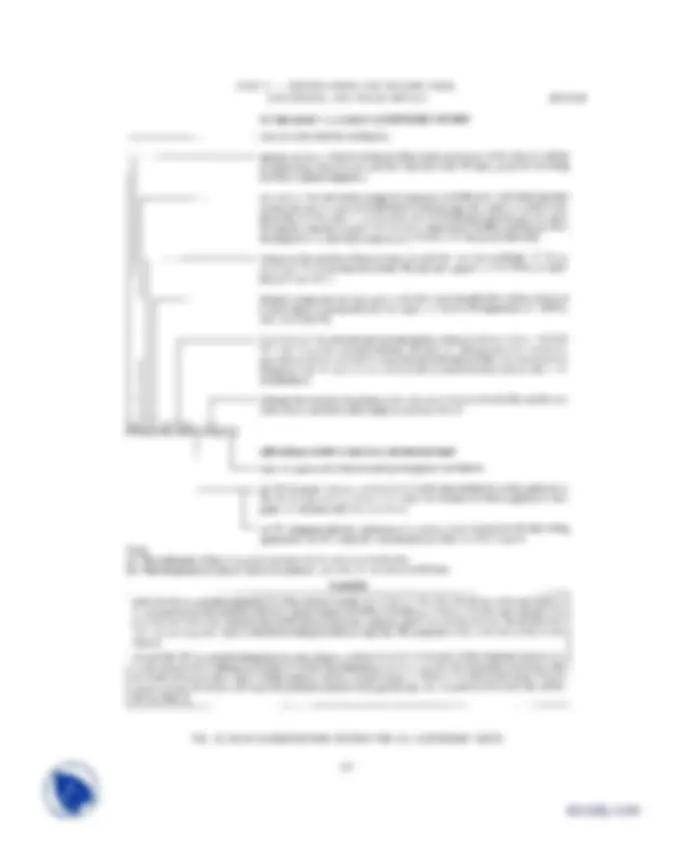
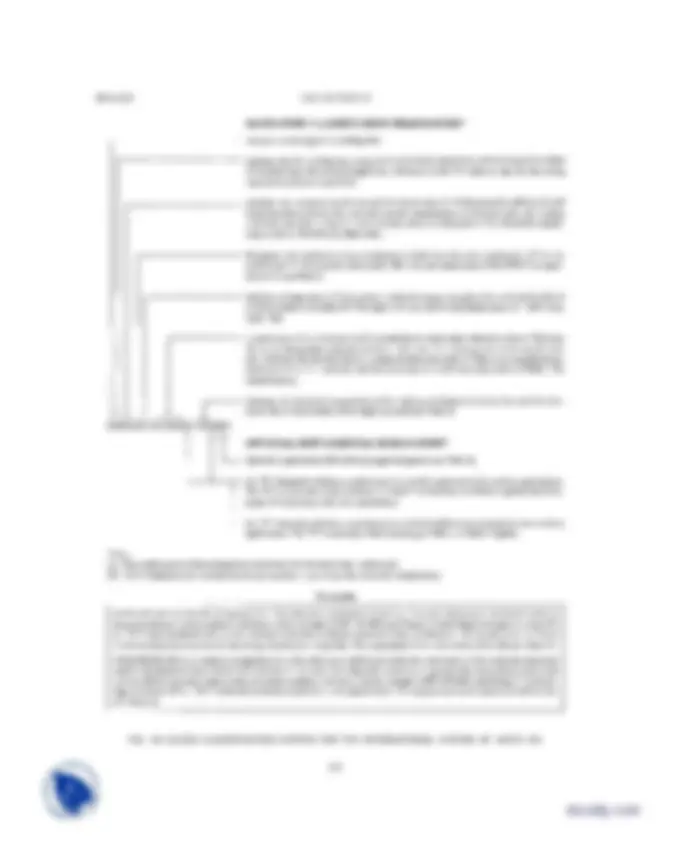
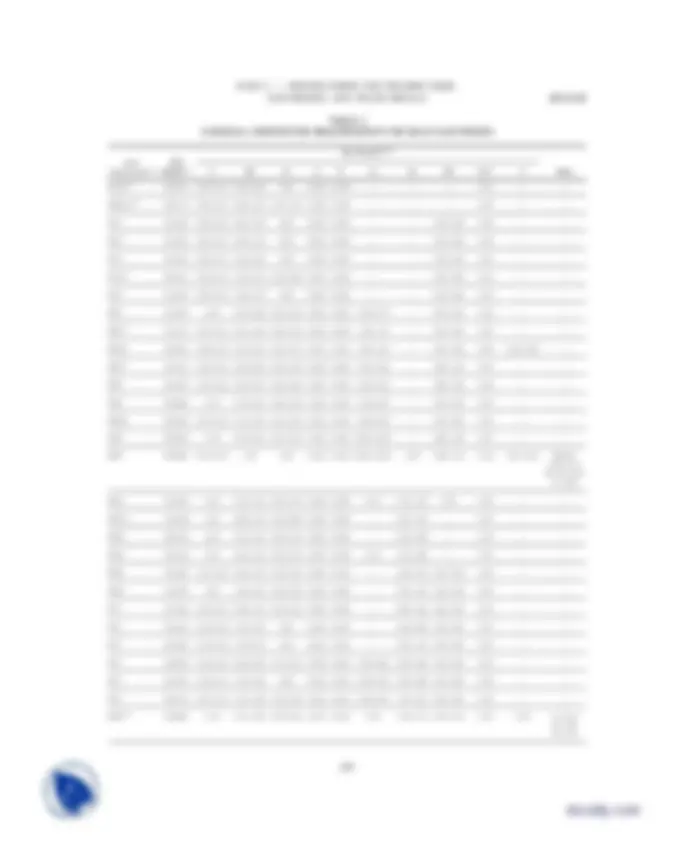
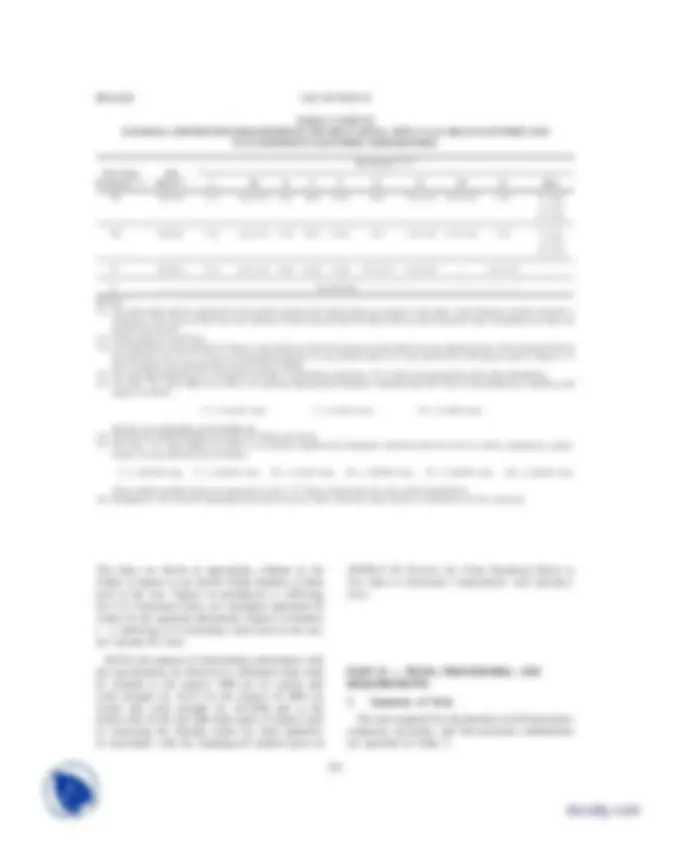
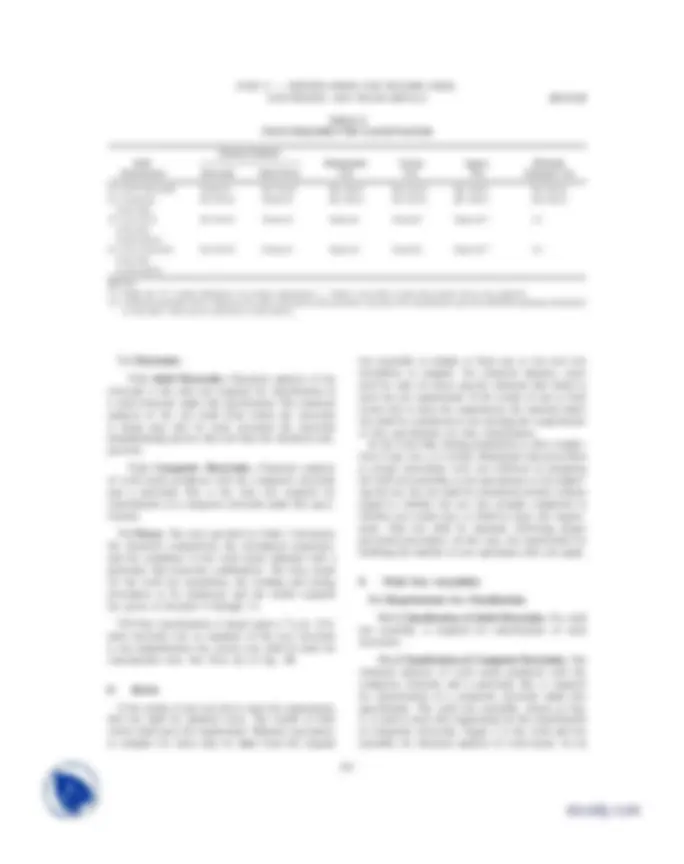
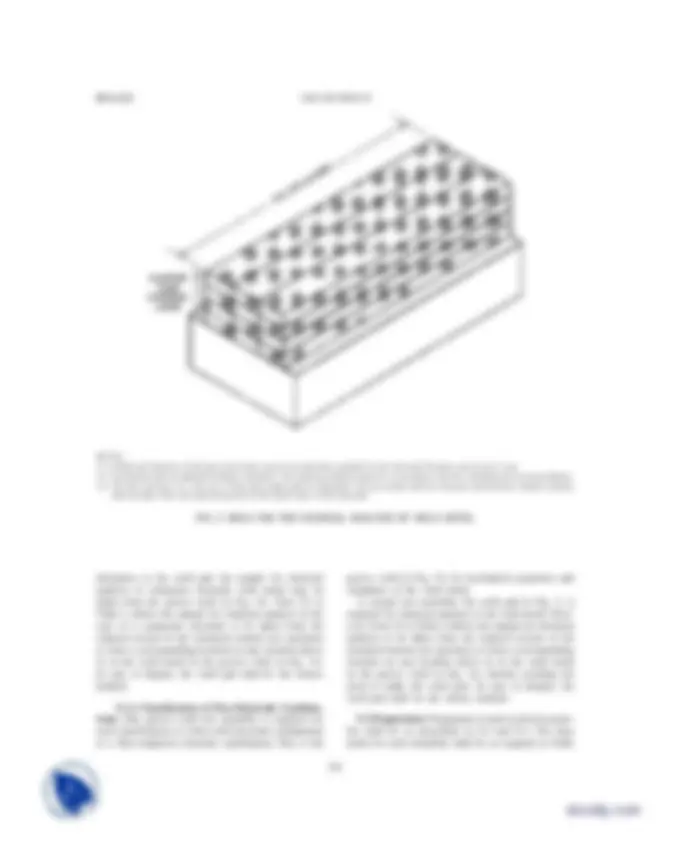
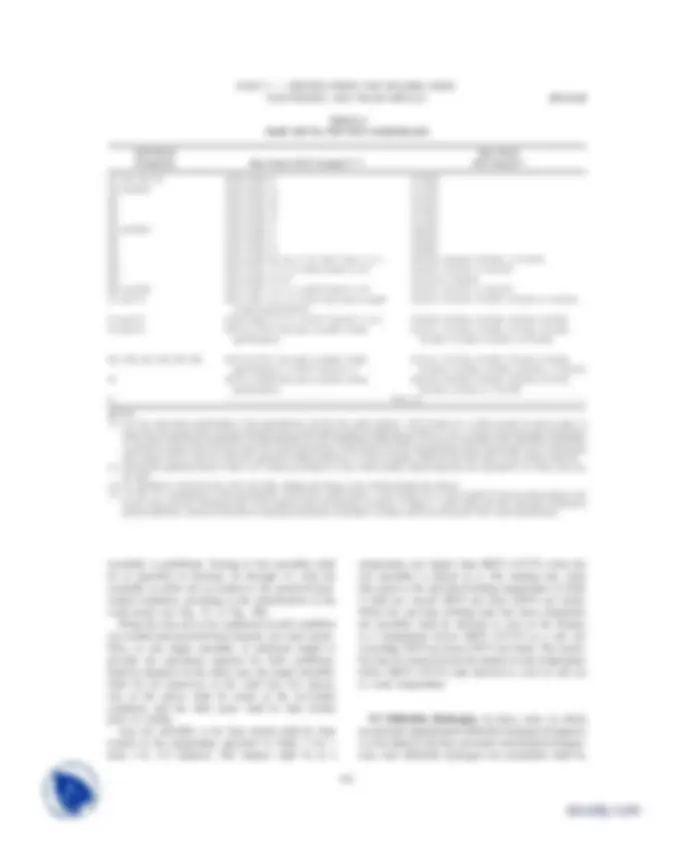
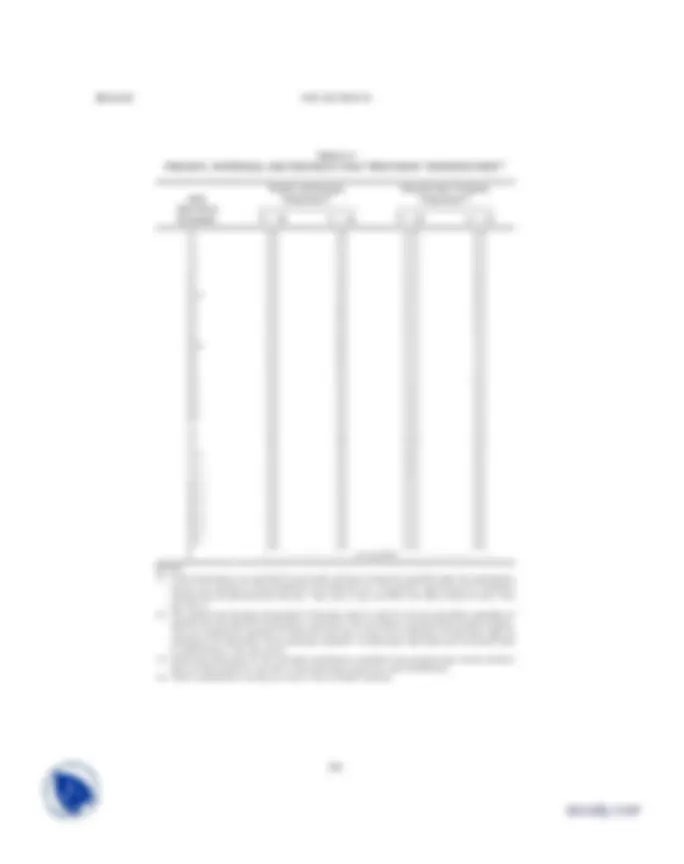
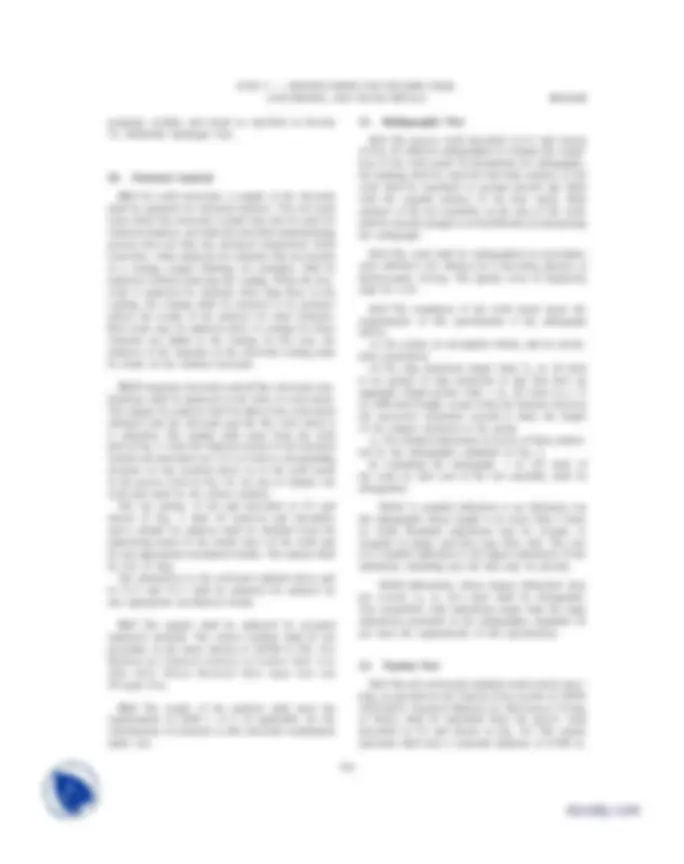
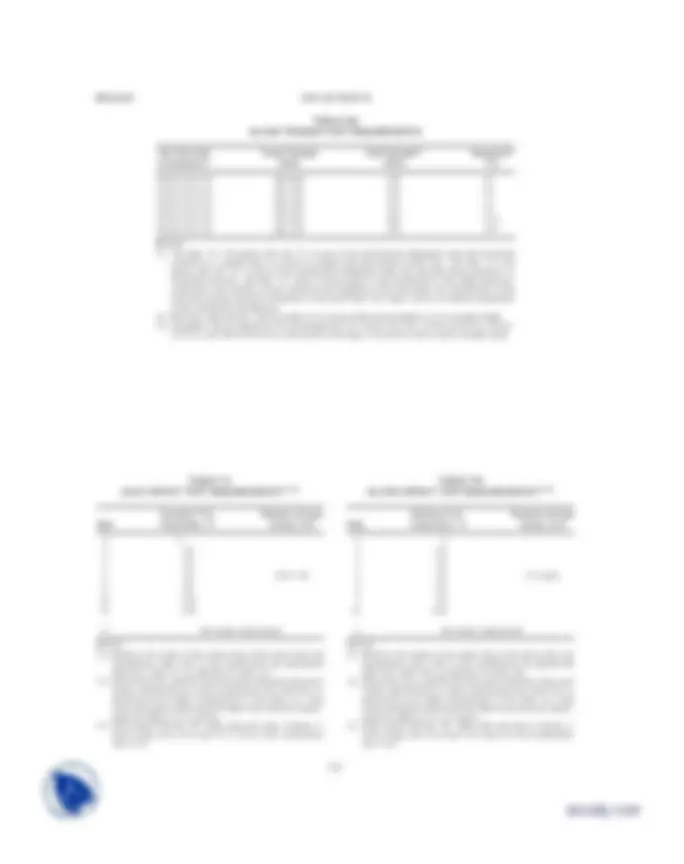
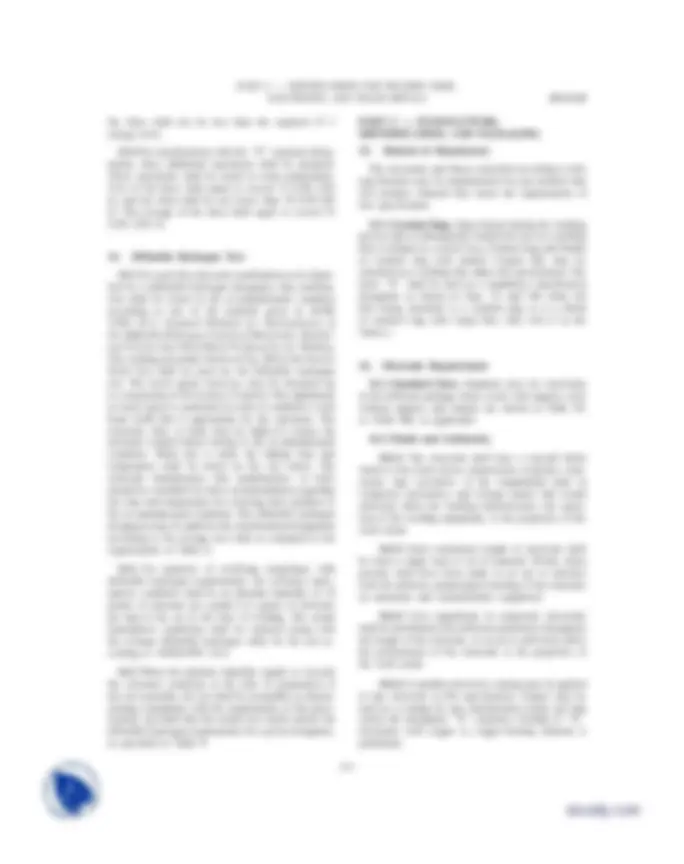
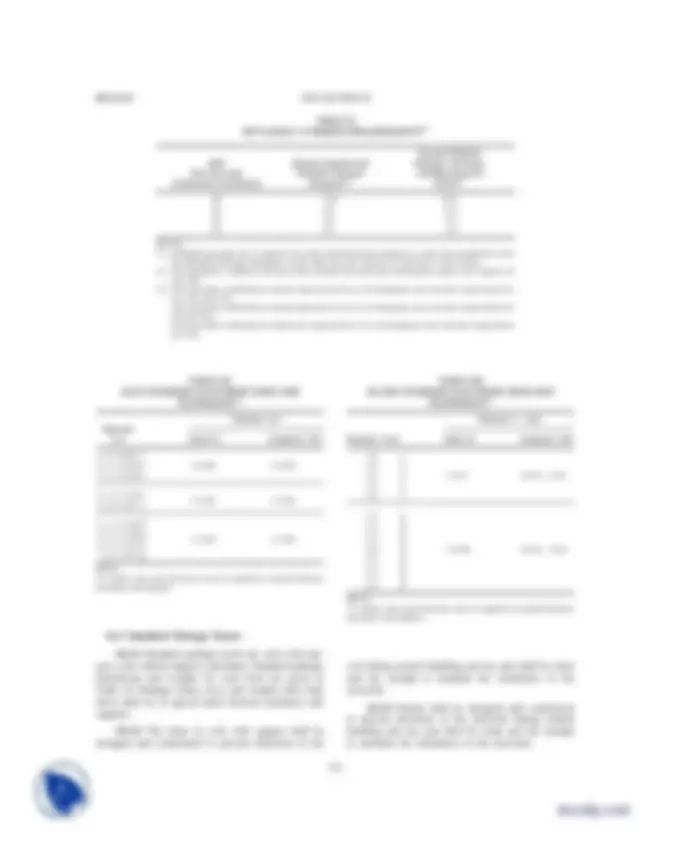
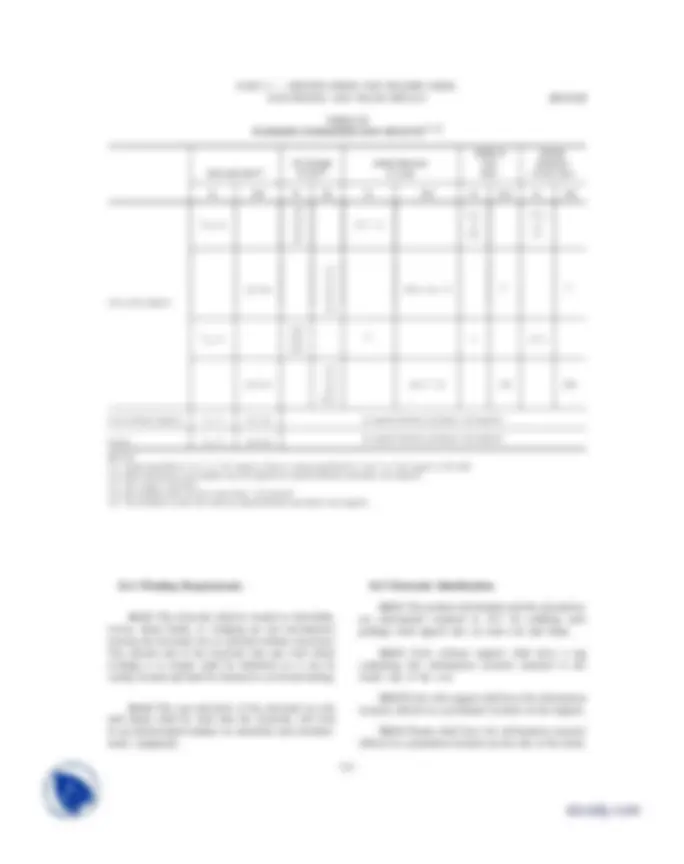
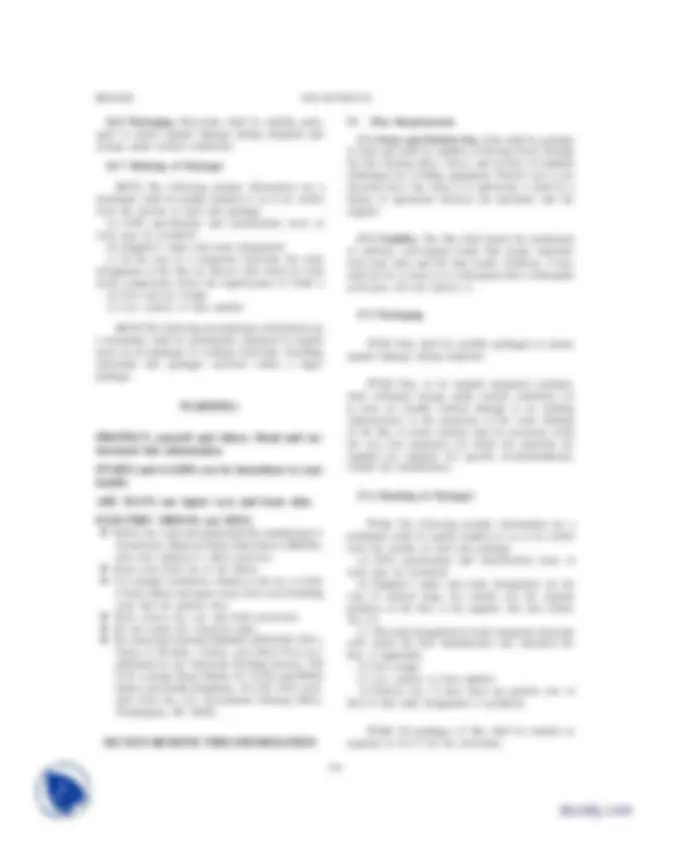
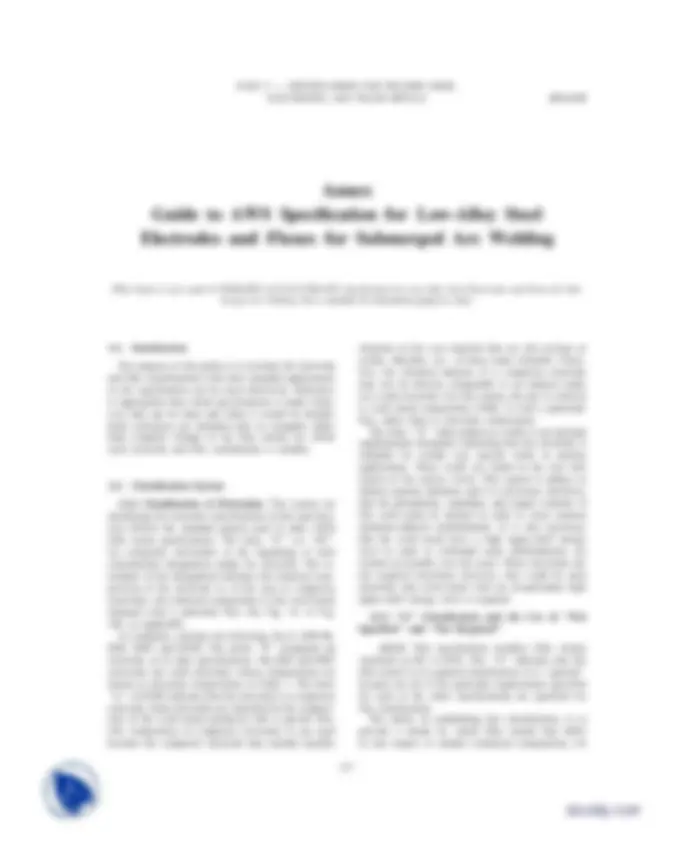
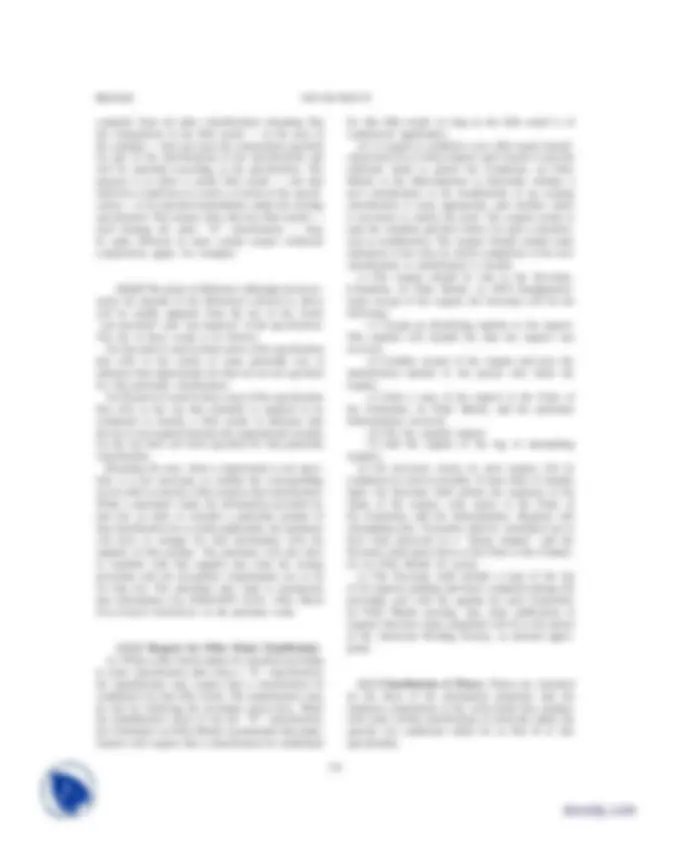
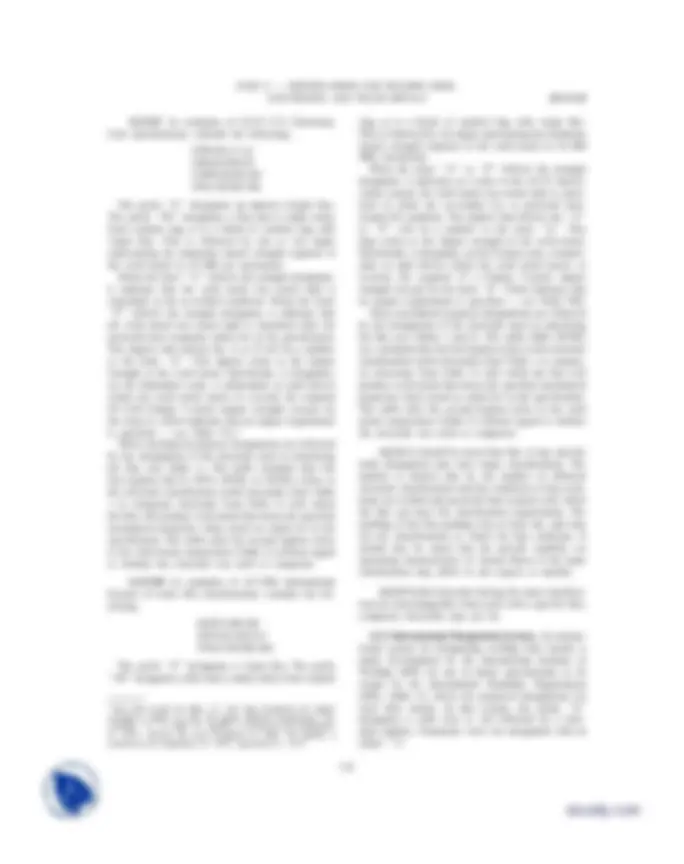
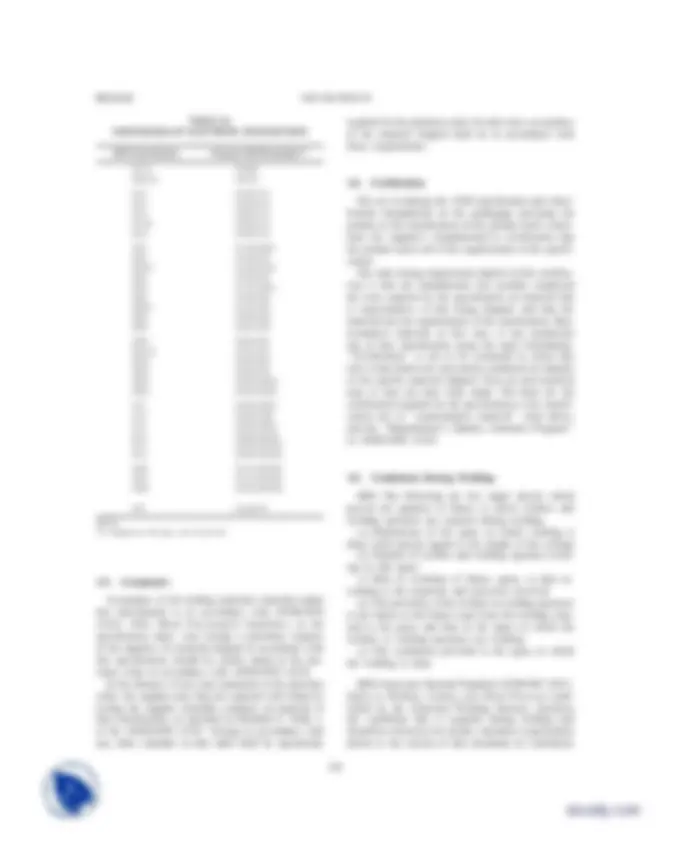
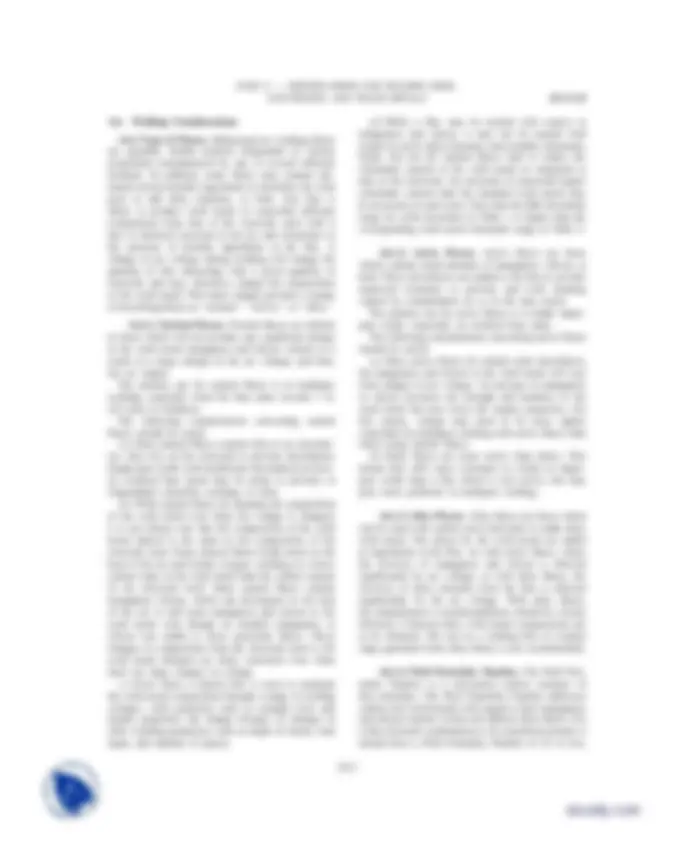
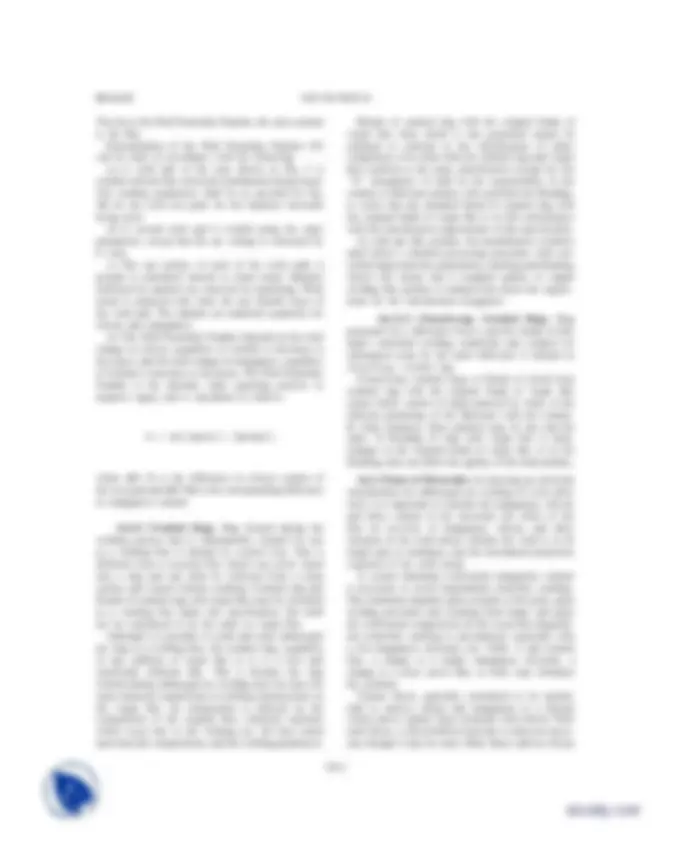
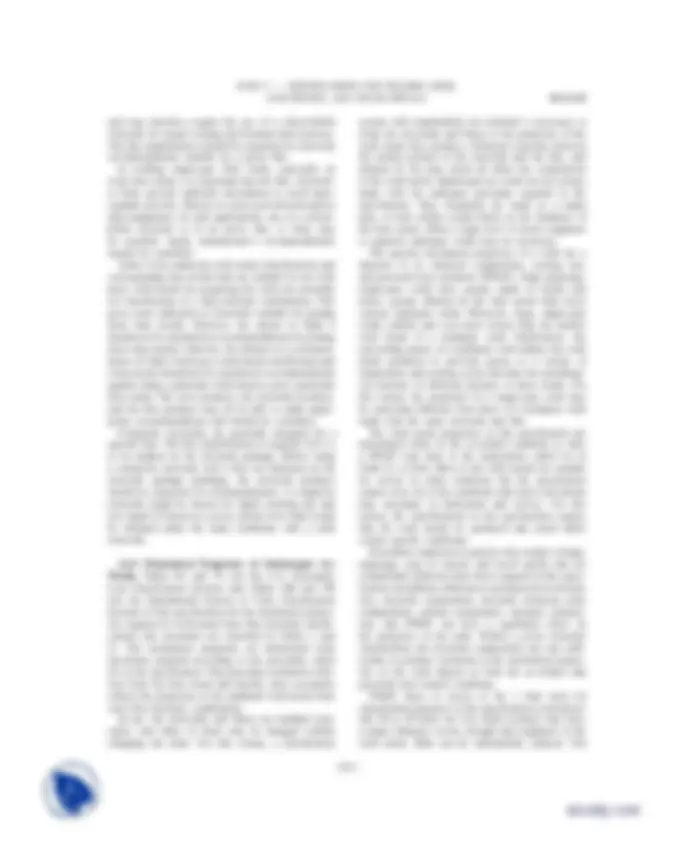
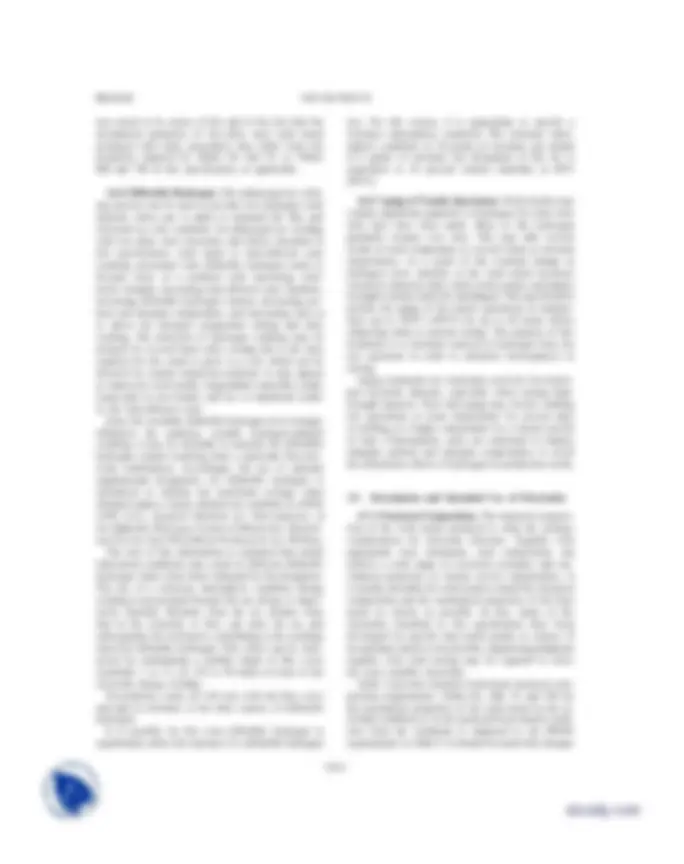
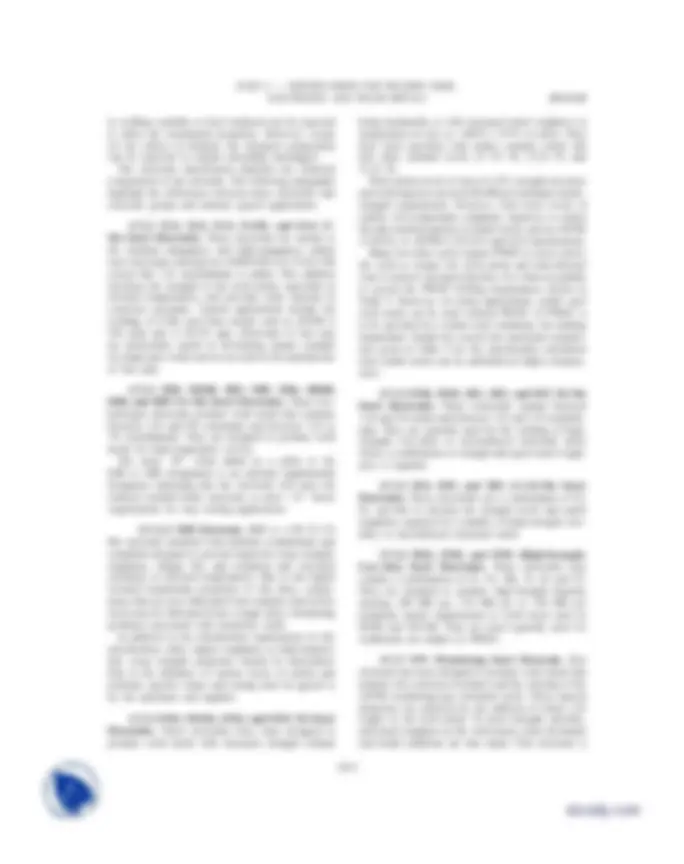
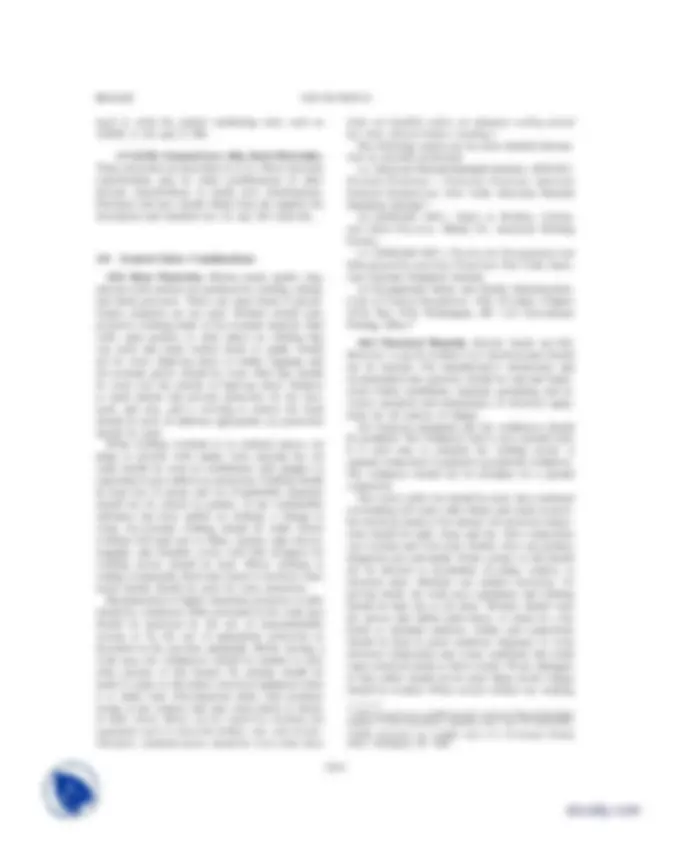
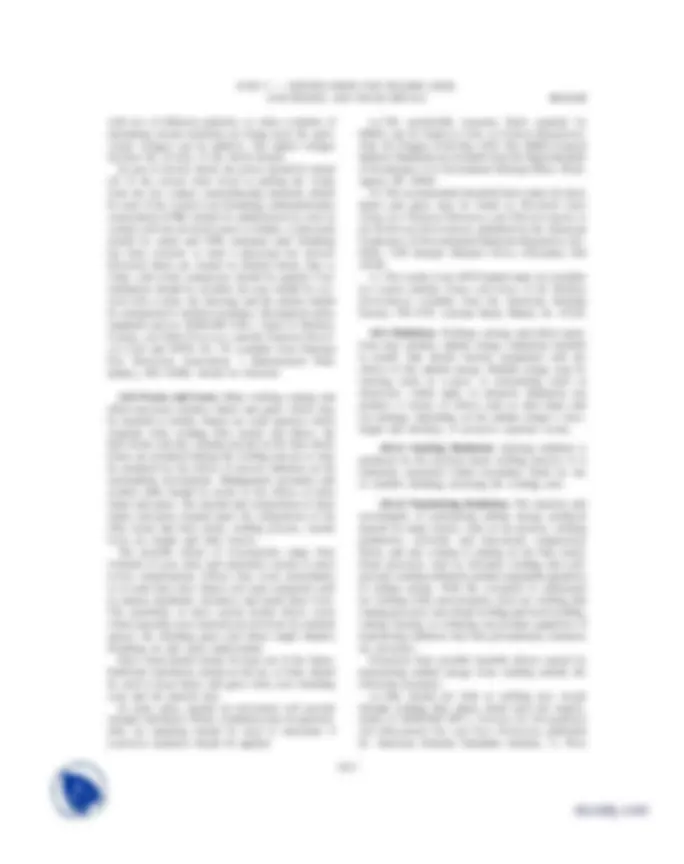
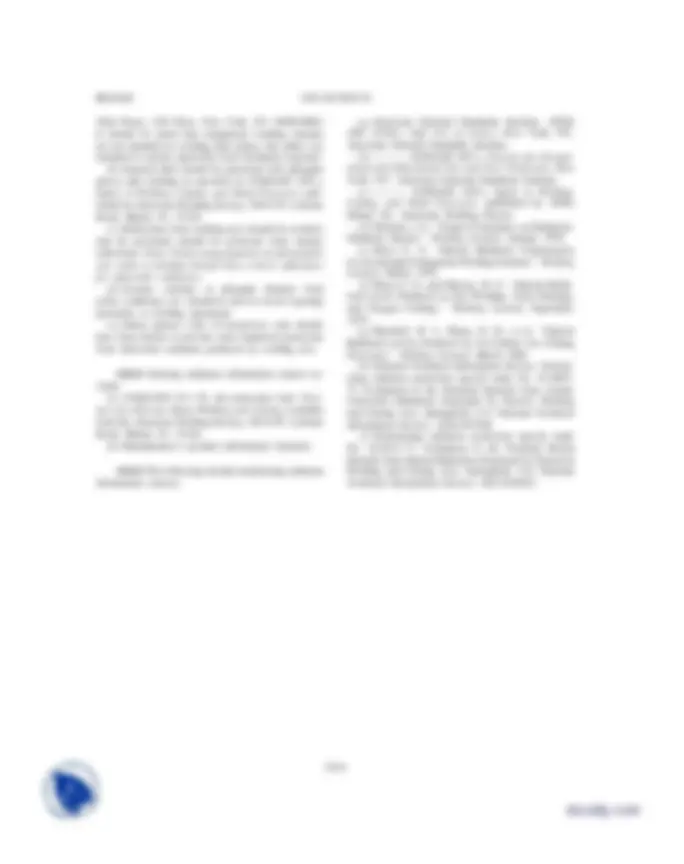


Study with the several resources on Docsity

Earn points by helping other students or get them with a premium plan


Prepare for your exams
Study with the several resources on Docsity

Earn points to download
Earn points by helping other students or get them with a premium plan
Community
Ask the community for help and clear up your study doubts
Discover the best universities in your country according to Docsity users
Free resources
Download our free guides on studying techniques, anxiety management strategies, and thesis advice from Docsity tutors
The requirements for the classification of low-alloy steel electrodes and fluxes for submerged arc welding. The specification prescribes mechanical properties of weld metal obtained with specific fluxes and electrodes, as well as the condition of heat treatment. The document also includes tests required for classification, such as chemical analysis, tension test, impact test, and hydrogen test. Available in both us customary units and international system of units (si).
Typology: Exercises
1 / 34

This page cannot be seen from the preview
Don't miss anything!



























(Identical with AWS Specification A5.23/A5.23M-97.)
1. Scope
This specification prescribes requirements for the classification of low-alloy steel electrodes (both solid and composite) and fluxes for submerged arc welding. This document is the first of the A5.23 specifications which is a combined specification providing for classifi- cation utilizing a system based upon U.S. Customary Units, or utilizing a system based upon the International System of Units (SI). The measurements are not exact equivalents; therefore, each system must be used inde- pendently of the other, without combining values in any way. In selecting rational metric units, ANSI/AWS A1.1, Metric Practice Guide for the Welding Industry , is used where suitable. Tables and figures make use of both U.S. Customary Units and SI Units which, with the application of the specified tolerances, provides for interchangeability of products in both U.S. Custom- ary and SI Units. (a) Paragraphs, tables, and figures which carry the suffix letter ‘‘U’’ are applicable only to those products classified to the system based upon U.S. Customary Units under the A5.23 specification. (b) Paragraphs, tables, and figures which carry the suffix letter ‘‘M’’ are applicable only to those products classified to the system based upon the International System of Units (SI), under the A5.23M specification. (c) Paragraphs, tables, and figures which do not have either the suffix letter ‘‘U’’ or the suffix letter ‘‘M’’ are applicable to those products classified under either the U.S. Customary Units System or the International System of Units (SI).
495
2. Normative References 2.1 The following ANSI/AWS 1 standards are refer- enced in the mandatory sections of this document: (a) ANSI/AWS A1.1, Metric Practice Guide for the Welding Industry (b) ANSI/AWS A4.3, Standard Methods for Determi- nation of the Diffusible Hydrogen Content of Marten- sitic, Bainitic, and Ferritic Steel Weld Metal Produced by Arc Welding (c) ANSI/AWS A5.01, Filler Metal Procurement Guidelines (d) ANSI/AWS A5.1, Specification for Carbon Steel Electrodes for Shielded Metal Arc Welding (e) ANSI/AWS B4.0, Standard Methods for Mechan- ical Testing of Welds
2.2 The following ASTM standards 2 are referenced in the mandatory sections of this document: (a) ASTM A 36/A 36M, Specification for Carbon Structural Steel (b) ASTM A 203/A 203M, Specification for Pressure Vessel Plates, Alloy Steel, Nickel (c) ASTM A 204/A 204M, Specification for Pressure Vessel Plates, Alloy Steel, Molybdenum
(^1) AWS standards may be obtained from the American Welding Society, 550 N.W. LeJeune Road, Miami, FL 33126. (^2) ASTM standards can be obtained from ASTM, 100 Barr Harbor Drive, West Conshohocken, PA 19428-2959.
A
SFA-5.23 1998 SECTION II
(d) ASTM A 285/A 285M, Specification for Pressure Vessel Plates, Carbon Steel, Low- and Intermediate- Tensile Strength (e) ASTM A 302/A 302M, Specification for Pressure Vessel Plates, Alloy Steel, Manganese-Molybdenum and Manganese-Molybdenum-Nickel (f) ASTM A 387/A 387M, Specification for Pressure Vessel Plates, Alloy Steel, Chromium-Molybdenum (g) ASTM A 514/A 514M, Specification for High- Yield-Strength, Quenched and Tempered Alloy Steel Plate, Suitable for Welding (h) ASTM A 515/A 515M, Specification for Pressure Vessel Plates, Carbon Steel, for Intermediate- and Higher-Temperature Service (i) ASTM A 516/A 516M, Specification for Pressure Vessel Plates, Carbon Steel, for Moderate- and Lower- Temperature Service (j) ASTM A 517/A 517M, Specification for Pressure Vessel Plates, Alloy Steel, High-Strength, Quenched and Tempered (k) ASTM A 533/A 533M, Specification for Pressure Vessel Plates, Alloy Steel, Quenched and Tempered, Manganese-Molybdenum and Manganese-Molybdenum- Nickel (l) ASTM A 537/A 537M, Specification for Pressure Vessel Plates, Heat-Treated, Carbon-Manganese-Sili- con Steel (m) ASTM A 543/A 543M, Specification for Pressure Vessel Plates, Alloy Steel, Quenched and Tempered Nickel-Chromium-Molybdenum (n) ASTM A 572/A 572M, Specification for High- Strength Low-Alloy Columbium-Vanadium Structural Steel (o) ASTM A 588/A 588M, Specification for High- Strength Low-Alloy Structural Steel with 50 ksi [ MPa] Minimum Yield Point to 4 in. [100 mm] Thick (p) ASTM DS-56, SAE HS-1086, Metals and Alloys in the Unified Numbering System (q) ASTM E 29, Practice for Using Significant Digits in Test Data to Determine Conformance with Specifica- tions (r) ASTM E 142, Method for Controlling Quality of Radiographic Testing (s) ASTM E 350, Test Methods for Chemical Analy- sis of Carbon Steel, Low Alloy Steel, Silicon Electrical Steel, Ingot Iron and Wrought Iron
2.3 The following ISO standard 3 is referenced in the mandatory section of this document.
(^3) ISO standards may be obtained from The American National Standards Institute (ANSI), 11 West 42nd Street, 13th Floor, New York, NY 10036-
496
(a) ISO 864, Arc Welding — Solid and Tubular Cored Wires Which Deposit Carbon and Carbon Manganese Steel — Dimensions of Wires, Spools, Rims and Coils.
3. Classification 3.1U The welding electrodes and fluxes covered by the A5.23 specification utilize a classification system based upon U.S. Customary Units and are classified according to the following: (a) The mechanical properties of the weld metal obtained with the combination of a particular flux and a particular classification of electrode, as specified in Tables 6U and 7U (b) The condition of heat treatment in which those properties are obtained, as specified in 9.4 (and shown in Fig. 1U) (c) The chemical composition of the weld metal obtained with the combination of a particular flux and a particular classification of electrode as specified in Table 2 (d) The chemical composition of the electrode (for solid electrodes) as specified in Table 1 or the weld metal produced with a particular flux (for composite electrodes) as specified in Table 2 3.1M The welding electrodes and fluxes covered by the A5.23M specification utilize a classification system based upon the International System of Units (SI), according to the following: (a) The mechanical properties of the weld metal obtained with the combination of a particular flux and a particular classification of electrode, as specified in Tables 6M and 7M (b) The condition of heat treatment in which those properties are obtained, as specified in 9.4 (and shown in Fig. 1M) (c) The chemical composition of the weld metal obtained with the combination of a particular flux and a particular classification of electrode as specified in Table 2 (d) The chemical composition of the electrode (for solid electrodes) as specified in Table 1 or the weld metal produced with a particular flux (for composite electrodes) as specified in Table 2 3.2 Solid electrodes classified under one classification shall not be classified under any other classification in this specification. Composite electrodes may be classi- fied under more than one classification when used with different fluxes. Fluxes may be classified under any number of classifications, for weld metal in either or both the as-welded and postweld heat-treated conditions, using different electrode classifications. Flux-electrode
SFA-5.23 1998 SECTION II
FIG. 1M A5.23M CLASSIFICATION SYSTEM FOR THE INTERNATIONAL SYSTEM OF UNITS (SI)
498
CHEMICAL COMPOSITION REQUIREMENTS FOR SOLID ELECTRODES
Wt. Percent(1) (2) AWS UNS
CHEMICAL COMPOSITION REQUIREMENTS FOR WELD METAL (BOTH FLUX-SOLID ELECTRODE AND FLUX-COMPOSITE ELECTRODE COMBINATIONS) Wt. Percent(1) (2) (3) Weld Metal UNS
SFA-5.23 1998 SECTION II
TABLE 2 (CONT’D) CHEMICAL COMPOSITION REQUIREMENTS FOR WELD METAL (BOTH FLUX-SOLID ELECTRODE AND FLUX-COMPOSITE ELECTRODE COMBINATIONS)
Wt. Percent(1) (2) (3) Weld Metal UNS Designation(4) (5)^ Number(6)^ C Mn Si S P Cr Ni Mo Cu Other
M5 W21345 0.12 1.60–2.50 0.50 0.015 0.015 0.40 1.40–2.10 0.20–0.50 0.30 Ti: 0. V: 0. Zr: 0. M6 W21346 0.12 1.60–2.50 0.50 0.015 0.015 0.40 1.40–2.10 0.70–1.00 0.30 Ti: 0. V: 0. Zr: 0. W W21040 0.12 0.50–1.60 0.80 0.030 0.035 0.45–0.70 0.40–0.80... 0.30–0.... G - - - - - - - - - - - - - - - - - - - - - - - - - - - - - - - - - - - - Not Specified - - - - - - - - - - - - - - - - - - - - - - - - - - - - - - - - - - - - -
NOTES: (1) The weld metal shall be analyzed for the specific elements for which values are shown in this table. If the presence of other elements is indicated, in the course of this work, the amount of those elements shall be determined to ensure that their total (excluding iron) does not exceed 0.50 percent. (2) Single values are maximum. (3) As a substitute for the weld pad in Figure 2, the sample for chemical analysis may be taken from the reduced section of the fractured tension test specimen (see 12.1) or from a corresponding location (or any location above it) in the weld metal in the groove weld in Figure 3. In case of dispute, the weld pad shall be the referee method. (4) The electrode designation for composite electrodes is obtained by placing an “EC” before the appropriate weld metal designation. (5) The letter “N” when added as a suffix is an optional supplemental designator indicating that the limits on the phosphorus, vanadium, and copper as follows: P p 0.012% max. V p 0.05% max. Cu p 0.08% max. See A2.1 for explanation and intended use. (6) SAE/ASTM Unified Numbering System for Metal and Alloys. (7) The letter “R” when added as a suffix is an optional supplemental designator indicating that the limits on sulfur, phosphorus, copper, arsenic, tin and antimony are as follows: S p 0.010% max. P p 0.010% max. Cu p 0.15% max. As p 0.005% max. Sn p 0.005% max. Sb p 0.005% max. These reduced residual limits are necessary to meet “X” factor requirements for step cooling applications. (8) Manganese in Ni1 and Ni2 designated weld metal may be 1.80% maximum when carbon is restricted to 0.10% maximum.
The latter are shown in appropriate columns in the Tables or figures or are shown within brackets [] when used in the text. Figures in parenthesis (), following the U.S. Customary Units, are calculated equivalent SI values for the specified dimensions. Figures in brackets [ ], following U.S. Customary Units used in the text, are rational SI Units.
6.2 For the purpose of determining conformance with this specification, an observed or calculated value shall be rounded to the nearest 1000 psi for tensile and yield strength for A5.23 [to the nearest 10 MPa for tensile and yield strength for A5.23M] and to the nearest unit in the last right-hand place of figures used in expressing the limiting values for other quantities in accordance with the rounding-off method given in
502
ASTM E 29, Practice for Using Significant Digits in Test Data to Determine Conformance with Specifica- tions.
7. Summary of Tests The tests required for classification of solid electrodes, composite electrodes, and flux-electrode combinations are specified in Table 3.
SFA-5.23 1998 SECTION II
NOTES: (1) Width and thickness of the base metal plate may be any dimension suitable for the electrode diameter and current in use. (2) Weld beads shall be deposited without oscillation. The welding conditions shall be in accordance with the manufactured recommendations. (3) The first and last 2 in. [50 mm] of the weld length shall be discarded. The top surface shall be removed, and chemical analysis samples shall be taken from the underlying metal of the fourth layer of the weld pad.
FIG. 2 WELD PAD FOR CHEMICAL ANALYSIS OF WELD METAL
alternative to the weld pad, the sample for chemical analysis of composite electrode weld metal may be taken from the groove weld in Fig. 3A. Note (3) to Table 2 allows the sample for chemical analysis in the case of a composite electrode to be taken from the reduced section of the fractured tension test specimen or from a corresponding location (or any location above it) in the weld metal in the groove weld in Fig. 3A. In case of dispute, the weld pad shall be the referee method.
9.1.3 Classification of Flux-Electrode Combina- tions. One groove weld test assembly is required for each classification of a flux-solid electrode combination or a flux-composite electrode combination. This is the
504
groove weld in Fig. 3A for mechanical properties and soundness of the weld metal. A second test assembly, the weld pad in Fig. 2, is required for chemical analysis of the weld metal. How- ever, Note (3) to Table 2 allows the sample for chemical analysis to be taken from the reduced section of the fractured tension test specimen or from a corresponding location (or any location above it) in the weld metal in the groove weld in Fig. 3A, thereby avoiding the need to make the weld pad. In case of dispute, the weld pad shall be the referee method.
9.2 Preparation. Preparation of each weld test assem- bly shall be as prescribed in 9.3 and 9.4. The base metal for each assembly shall be as required in Table
PART C — SPECIFICATIONS FOR WELDING RODS,
FIG. 3A GROOVE WELD TEST ASSEMBLY
505
PART C — SPECIFICATIONS FOR WELDING RODS, ELECTRODES, AND FILLER METALS SFA-5.
TABLE 4 BASE METAL FOR TEST ASSEMBLIES
Weld Metal Base Metal Designation Base Metal ASTM Standard (1) (2)^ UNS Number (3)
A1, A2, A3, A4 A204 Grade A K B2 and B2H A387 Grade 11 K B3 A387 Grade 22 K B4 A387 Grade 22 K B5 A387 Grade 11 K B6 and B6H A387 Grade 5 S B8 A387 Grade 9 S B9 A387 Grade 91 S Ni1 A516 Grade 60, 65, or 70, A537 Class 1 or 2 K02100, K02403, K02700, or K Ni2 A537 Class 1 or 2, or A203 Grade A or B K12437, K21703, or K Ni3 A203 Grade D or E K31718 or K Ni4 and Ni5 A537 Class 1 or 2, or A203 Grade A or B K12437, K21703, or K F1 and F4 A537 Class 1 or 2, or A533 (any type or grade K12437, K12521, K12539, K12529, or K in these specifications) F2 and F3 A302 Grade C or D, or A533 Type B, C, or D K12039, K12054, K12539, K12529, K F5 and F6 A514 or A517 (any type or grade in these K11511, K11576, K11625, K11630, K11646, specifications) K11683, K11856, K21604, or K
M1, M2, M3, M4, M5, M6 A514 to A517 (any type or grade in these K11511, K11576, K11625, K11630, K11646, specifications), or A543 Type B or C K11683, K11856, K21604, K21650, or K W A572 or A588 (any type or grade in these K02303, K02304, K02305, K02306, K11430, specifications) K12040, K12043, or K G - - - - - - - - - - - - - - - - - - - - - - - - - - - - - - - - - - - Note (4) - - - - - - - - - - - - - - - - - - - - - - - - - - - - - - - - - - -
NOTES: (1) For any weld metal classification in this specification, ASTM A36, A285 Grade C, A515 Grade 70, or A516 Grade 70 may be used. In that case, the groove faces and the contacting face of the backing shall be buttered, as shown in Fig. 3, using a flux-electrode combination of the same weld metal composition as that specified for the combination being tested, or using an electrode of the specified composition classified in another AWS low-alloy steel filler metal specification. Alternatively, for the indicated weld metal classification, the corresponding base metals may be used for weld test assemblies without buttering. In case of dispute, buttered A36 steel shall be the referee material. (2) Chemically equivalent steels in other U.S. customary grades or in any metric grades, whose properties are expressed in SI Units, may also be used. (3) As classified in ASTM DS-56, SAE HS-1086,Metals and Alloys in the Unified Numbering System. (4) For the “G” classification in this specification, ASTM A36, A285 Grade C, A515 Grade 70, or A516 Grade 70 may be used; however, the groove faces and the contacting face of the backing shall be buttered, as shown in Figure 3, using either the flux-electrode combination being classified or using an electrode of matching composition classified in another AWS low-alloy steel filler metal specification.
assembly is prohibited. Testing of this assembly shall be as specified in Sections 10 through 13, with the assembly in either the as-welded or the postweld heat- treated condition, according to the classification of the weld metal (see Fig. 1U or Fig. 1M). When the tests are to be conducted in each condition (as-welded and postweld heat treated), two such assem- blies, or one single assembly of sufficient length to provide the specimens required for both conditions, shall be prepared. In the latter case, the single assembly shall be cut transverse to the weld into two pieces; one of the pieces shall be tested in the as-welded condition, and the other piece shall be heat treated prior to testing. Any test assembly to be heat treated shall be heat treated at the temperature specified in Table 5 for 1 hour (−0, +15 minutes). The furnace shall be at a
507
temperature not higher than 600°F [315°C] when the test assembly is placed in it. The heating rate, from that point to the specified holding temperature in Table 5 shall not exceed 400°F per hour [220°C per hour]. When the one-hour holding time has been completed, the assembly shall be allowed to cool in the furnace to a temperature below 600°F [315°C] at a rate not exceeding 350°F per hour [195°C per hour]. The assem- bly may be removed from the furnace at any temperature below 600°F [315°C] and allowed to cool in still air to room temperature.
9.5 Diffusible Hydrogen. In those cases in which an optional supplemental diffusible hydrogen designator is to be added to the flux-electrode classification designa- tion, four diffusible hydrogen test assemblies shall be
SFA-5.23 1998 SECTION II
TABLE 5 PREHEAT, INTERPASS, AND POSTWELD HEAT TREATMENT TEMPERATURES (1)
Preheat and Interpass Postweld Heat Treatment AWS Temperature (2)^ Temperature (3) Weld Metal Designation °F 6 25 °C 6 15 °F 6 25 °C 6 15 A1 300 150 1150 620 A2 300 150 1150 620 A3 300 150 1150 620 A4 300 150 1150 620 B1 300 150 1150 620 B2 300 150 1275 690 B2H 300 150 1275 690 B3 400 205 1275 690 B4 400 205 1275 690 B5 300 150 1150 620 B6 400 205 1375 745 B6H 400 205 1375 745 B8 400 205 1375 745 B9 400 205 1375 745 Ni1 300 150 1150 620 Ni2 300 150 1150 620 Ni3 300 150 1150 620 Ni4 300 150 1150 620 Ni5 300 150 1150 620 F1 300 150 1150 620 F2 300 150 1150 620 F3 300 150 1150 620 F4 (4)^300 150 1050 F5(4)^300 150 1050 F6(4)^300 150 1050 M1(4)^300 150 1125 M2(4)^300 150 1125 M3(4)^300 150 1125 M4(4)^300 150 1125 M5(4)^300 150 1125 M6(4)^300 150 1125 W(4)^300 150 1125 G - - - - - - - - - - - - - - - - - - - - not specified - - - - - - - - - - - - - - - - - - - - NOTES: (1) These temperatures are specified for electrodes and fluxes tested and classified under this specification and are not necessarily recommendations for production use. The specific requirements for production welding shall be determined by the user. They may or may not differ from those called for here. (See also A6.3). (2) The preheat and interpass temperatures listed here shall be used for the test assemblies regardless of whether the electrode-flux combination is classified in the as-welded or postweld heat treated condition. They are required for purposes of uniformity and may or may not be indicative of those that might be satisfactory for fabrication of any particular weldment. The fabricator shall determine for himself what is required there. (See also A6.3). (3) Weld metal specimens for flux electrode combinations classified in the postweld heat treated condition shall be heat treated for one hour at the temperature shown for each classification. (4) These classifications normally are used in the as-welded condition.
508
SFA-5.23 1998 SECTION II
NOTES: (1) The chart which is most representative of the size of the rounded indications in the radiograph of the test assembly shall be used for determination of conformance with this specification. Rounded indications smaller than 1 ⁄ 64 in. [0.4 mm] shall be disregarded. The largest dimension of the indication (including any tail) is the size of the indication. (2) These radiographic requirements are for test welds made in the laboratory specifically for classification purposes. They are more restrictive than those usually encountered in general fabrication. They are equivalent to the Grade 1 standards of ANSI/AWS A5.1,Specification for Carbon Steel Electrodes for Shielded Metal Arc Welding.
FIG. 4 RADIOGRAPHIC STANDARDS FOR ROUNDED INDICATIONS
510
PART C — SPECIFICATIONS FOR WELDING RODS, ELECTRODES, AND FILLER METALS SFA-5.
TABLE 6U A5.23 TENSION TEST REQUIREMENTS
Flux-Electrode Tensile Strength Yield Strength (2)^ Elongation (2) Classification (1)^ (psi) (psi) (%) F7XX-EXX-XX 70 000–95 000 58 000 22 F8XX-EXX-XX 80 000–100 000 68 000 20 F9XX-EXX-XX 90 000–110 000 78 000 17 F10XX-EXX-XX 100 000–120 000 88 000 16 F11XX-EXX-XX 110 000–130 000 98 000 15 (3) F12XX-EXX-XX 120 000–140 000 108 000 14 (3)
NOTES: (1) The letter “S” will appear after the “F” as part of the classification designation when the flux being classified is a crushed slag or a blend of crushed slag with unused (virgin) flux. The letter “C” will appear after the “E” as part of the classification designation when the electrode being classified is a composite electrode. The letter “X” used in various places in the classification in this table stands for, respectively, the condition of heat treatment, the toughness of the weld metal, the classification of the electrode, and the chemical composition of the weld metal. See Figure 1U for a complete explanation of the classification designators. (2) Minimum requirements. Yield strength at 0.2 percent offset and elongation in 2 in. gage length. (3) Elongation may be reduced by one percentage point for F11XX-EXX-XX, F11XX-ECXX-XX, F12XX-ECXX-XX, and F12XX-EXX-XX weld metals in the upper 25 percent of their tensile strength range.
[12.5 mm] and a nominal gage length to diameter ratio of 4:1. For flux-electrode combinations classified in the post- weld heat-treated condition, the weld metal shall be heat-treated as shown in Table 5 before final machining of the specimen.
12.2 After machining, but before testing, the specimen for all flux-electrode classifications, except those classi- fied in the postweld heat-treated condition, may be aged at temperatures up to 220°F [105°C] for up to 48 hours, then allowed to cool to room temperature. Refer to A6.5 for a discussion on the purpose of aging. The specimen shall be tested in the manner described in the Tension Test section of ANSI/AWS B4.0, Standard Methods for Mechanical Testing of Welds.
12.3 The results of the tension test shall meet the requirements specified in Table 6U or Table 6M, as applicable.
13. Impact Test
13.1 For those classifications for which impact testing is specified in Table 3, five Charpy V-notch impact specimens, as specified in the Fracture Toughness Test- ing of Welds section of ANSI/AWS B4.0, shall be machined from the test assembly shown in Fig. 3A. The Charpy V-notch specimens shall have the notched surface and the surface to be struck parallel within 0.002 in. [0.05 mm]. The other two surfaces shall be square with the notched or struck surface within 610 minutes of a degree. The notch shall be smoothly cut
511
by mechanical means and shall be square with the longitudinal edge of the specimen within one degree. The geometry of the notch shall be measured on at least one specimen in a set of five specimens. Measure- ment shall be done at minimum 50 times magnification on either a shadowgraph or a metallograph. The correct location of the notch shall be verified by etching before or after machining. For flux-electrode combinations classified in the post- weld heat-treated condition, the weld metal shall be heat-treated as shown in Table 5 before final machining of the specimens.
13.2 The five specimens shall be tested in accordance with the Fracture Toughness Test section of ANSI/ AWS B4.0. The test temperature shall be as specified in Table 7U or Table 7M, as applicable, for the classification under test.
13.3U In evaluating the test results, the lowest and the highest values obtained shall be disregarded. Two of the remaining three values shall equal, or exceed, the specified 20 ft·lbf energy level. One of the three may be lower, but not lower than 15 ft·lbf, and the average of the three shall not be less than the required 20 ft·lbf energy level.
13.3M In evaluating the test results, the lowest and the highest values obtained shall be disregarded. Two of the remaining three values shall equal, or exceed, the specified 27 J energy level. One of the three may be lower, but not lower than 20 J, and the average of
PART C — SPECIFICATIONS FOR WELDING RODS, ELECTRODES, AND FILLER METALS SFA-5.
the three shall not be less than the required 27 J energy level.
13.4 For classifications with the ‘‘N’’ (nuclear) desig- nation, three additional specimens shall be prepared. These specimens shall be tested at room temperature. Two of the three shall equal or exceed 75 ft·lbf [ J], and the third shall be not lower than 70 ft·lbf [ J]. The average of the three shall equal or exceed 75 ft·lbf [102 J].
14. Diffusible Hydrogen Test
14.1 For each flux-electrode combination to be identi- fied by a diffusible hydrogen designator, that combina- tion shall be tested in the as-manufactured condition according to one of the methods given in ANSI/ AWS A4.3, Standard Methods for Determination of the Diffusible Hydrogen Content of Martensitic, Bainitic, and Ferritic Steel Weld Metal Produced by Arc Welding. The welding procedure shown in Fig. 3B for the Groove Weld Test shall be used for the diffusible hydrogen test. The travel speed, however, may be increased up to a maximum of 28 in./min [12 mm/s]. This adjustment in travel speed is permitted in order to establish a weld bead width that is appropriate for the specimen. The electrode, flux, or both, may be baked to restore the moisture content before testing to the as-manufactured condition. When this is done, the baking time and temperature shall be noted on the test report. The electrode manufacturer, flux manufacturer, or both, should be consulted for their recommendation regarding the time and temperature for restoring their products to the as-manufactured condition. The diffusible hydrogen designator may be added to the classification designation according to the average test value as compared to the requirements of Table 8.
14.2 For purposes of certifying compliance with diffusible hydrogen requirements, the reference atmo- spheric condition shall be an absolute humidity of 10 grains of moisture per pound [1.5 grams of moisture per kg] of dry air at the time of welding. The actual atmospheric conditions shall be reported along with the average diffusible hydrogen value for the test ac- cording to ANSI/AWS A4.3.
14.3 When the absolute humidity equals or exceeds the reference condition at the time of preparation of the test assembly, the test shall be acceptable as demon- strating compliance with the requirements of this speci- fication, provided that the actual test results satisfy the diffusible hydrogen requirements for a given designator, as specified in Table 8.
513
15. Method of Manufacture The electrodes and fluxes classified according to this specification may be manufactured by any method that will produce material that meets the requirements of this specification.
15.1 Crushed Slags. Slag formed during the welding process that is subsequently crushed for use as a welding flux is defined as crushed slag. Crushed slag and blends of crushed slag with unused (virgin) flux may be classified as a welding flux under this specification. The letter ‘‘S’’ shall be used as a mandatory classification designator as shown in Figs. 1U and 1M when the flux being classified is a crushed slag or is a blend of crushed slag with virgin flux. (See A6.1.5 in the Annex.)
16. Electrode Requirements 16.1 Standard Sizes. Standard sizes for electrodes in the different package forms (coils with support, coils without support, and drums) are shown in Table 9U or Table 9M, as applicable.
16.2 Finish and Uniformity
16.2.1 The electrode shall have a smooth finish which is free from slivers, depressions, scratches, scale, seams, laps (exclusive of the longitudinal joint in composite electrodes), and foreign matter that would adversely affect the welding characteristics, the opera- tion of the welding equipment, or the properties of the weld metal.
16.2.2 Each continuous length of electrode shall be from a single heat or lot of material. Welds, when present, shall have been made so as not to interfere with the uniform, uninterrupted feeding of the electrode on automatic and semiautomatic equipment.
16.2.3 Core ingredients in composite electrodes shall be distributed with sufficient uniformity throughout the length of the electrode, so as not to adversely affect the performance of the electrode or the properties of the weld metal.
16.2.4 A suitable protective coating may be applied to any electrode in this specification. Copper may be used as a coating for any classification except one that carries the designator ‘‘N’’ (nuclear). Coating of ‘‘N’’ electrodes with copper or copper-bearing material is prohibited.
SFA-5.23 1998 SECTION II
TABLE 8 DIFFUSIBLE HYDROGEN REQUIREMENTS (1)
Average Diffusible AWS Optional Supplemental Hydrogen, Maximum Flux-Electrode Diffusible Hydrogen (ml/100g Deposited Combination Classification Designator(2)^ Metal) (3) All H16 16. All H8 8. All H4 4. All H2 2. NOTES: (1) Diffusible hydrogen test is required only when specified by the purchaser or when the manufacturer puts the diffusible hydrogen designator on the label (see also Section A3 and A6.4 in the Annex). (2) This designator is added to the end of the complete flux-electrode classification system (see Figures 1U and 1M) (3) Flux-electrode combinations meeting requirements for an H2 designator also meet the requirements for H4, H8, and H16. Flux-electrode combinations meeting requirements for an H4 designator also meet the requirements for H8 and H16. Flux-electrode combinations meeting the requirements for an H8 designator also meet the requirements for H16.
TABLE 9U A5.23 STANDARD ELECTRODE SIZES AND TOLERANCES (1) Tolerance (in.) Diameter (in.) Solid (E) Composite (EC) (^1) ⁄ 6 or 0. (^5) ⁄ 64 or 0.
6 0.002 6 0. (^3) ⁄ 32 or 0.
(^7) ⁄ 64 or 0. (^1) ⁄ 8 or 0.125 6 6 0.003^6 0.
(^5) ⁄ 32 or 0. (^3) ⁄ 16 or 0. (^7) ⁄ 6 0.004^6 0.
(^1) ⁄ 4 or 0.
NOTE: (1) Other sizes and tolerances may be supplied as agreed between purchaser and supplier.
16.3 Standard Package Forms 16.3.1 Standard package forms are coils with sup- port, coils without support, and drums. Standard package dimensions and weights for each form are given in Table 10. Package forms, sizes, and weights other than these shall be as agreed upon between purchaser and supplier.
16.3.2 The liners in coils with support shall be designed and constructed to prevent distortion of the
514
TABLE 9M A5.23M STANDARD ELECTRODE SIZES AND TOLERANCES (1) Tolerance ( 6 mm)
Diameter (mm) Solid (E) Composite (EC)
2.4 6 0.04 +0.04, −0.
4.8 (^6) 0.006 +0.06, −0.
NOTE: (1) Other sizes and tolerances may be supplied as agreed between purchaser and supplier.
coil during normal handling and use and shall be clean and dry enough to maintain the cleanliness of the electrode. 16.3.3 Drums shall be designed and constructed to prevent distortion of the electrode during normal handling and use and shall be clean and dry enough to maintain the cleanliness of the electrode.